The Art of Dining Room Buffet Decor: Where Style Meets Sustenance

The dining room buffet, or sideboard, once a stately furnishing relegated to formal dining rooms and holiday gatherings, has reclaimed its rightful place as the unsung hero of home entertaining. This versatile piece serves as both functional storage and a canvas for self-expression—a stage where practical meets poetic in the theater of home design. Yet for many of us, styling this space remains an enigma wrapped in a decorative conundrum.
“I know it when I see it,” says Maria Cordon, surveying her friend’s impeccably styled buffet during a dinner party in Brooklyn Heights. “But recreating that effortless elegance in my own home? That’s where I get stuck.” Maria isn’t alone in her buffet-styling bewilderment. Many homeowners find themselves adrift in a sea of Pinterest perfection, unable to translate inspiration into reality.
The Psychology of Color: Setting the Stage
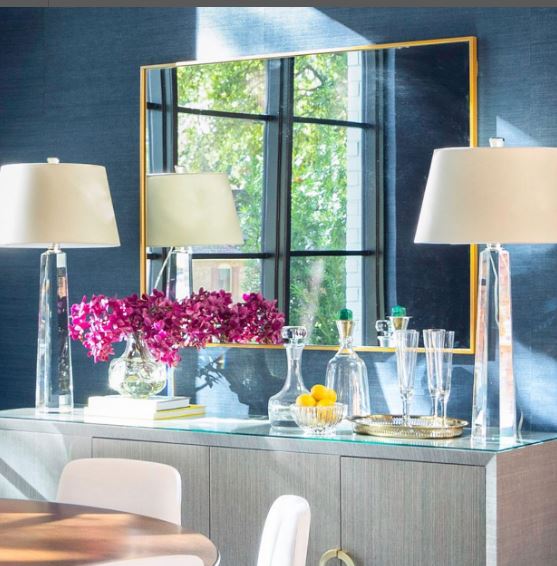
The secret to a standout buffet begins not with objects but with intention—specifically, the emotional response you wish to evoke. Color theory offers the most direct route to the heart of your dining experience.
“Color is the silent conductor of the dining orchestra,” explains interior designer Marcus Williams. “Warm tones like terra cotta, amber, and russet stimulate conversation and, interestingly, appetite—perfect for convivial dinner parties. Cooler hues create calm, making them ideal for more intimate gatherings where conversation might delve deeper.”
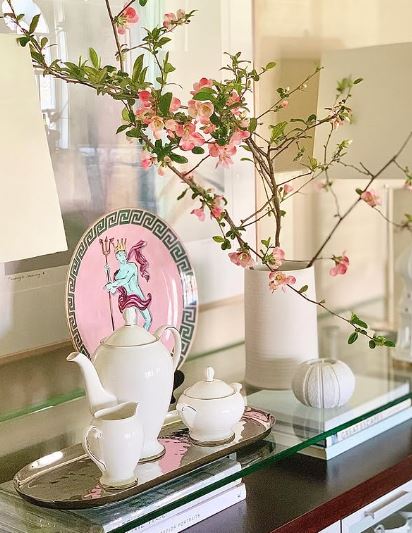
Williams suggests choosing a dominant color that anchors your buffet design—perhaps the color of your wall, your table linens, or a statement piece—then building outward. But don’t stop at flat color. Texture creates dimension: the gloss of ceramic alongside matte linen, hammered copper against smooth glass. These juxtapositions keep the eye engaged and the buffet from appearing static.
The Hierarchy of Elements: Creating Visual Poetry
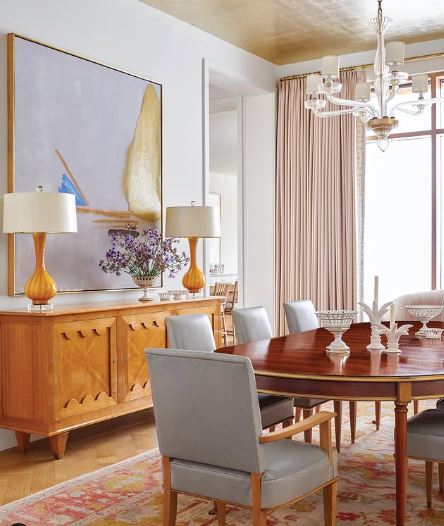
Every well-styled buffet tells a story through a careful hierarchy of elements. Begin with a foundation piece—typically something with height and presence placed centrally or slightly off-center. A mirror framed in weathered gold, a piece of provocative art, or even a simple wreath can serve as this anchoring element.
The eye needs somewhere to land first. Without this focal point, your gaze wanders aimlessly, and the space feels unresolved.
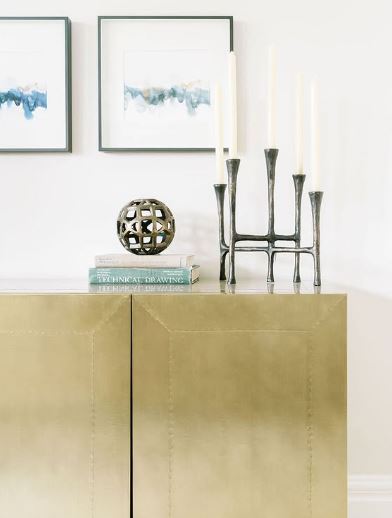
From this foundation, work outward and downward with supporting players. Consider the rule of three—objects grouped in trios tend to please the eye mysteriously well. Vary heights to create rhythm: a tall candle holder, a medium-height plant, a low stack of vintage books. This creates what designers call “visual topography”—a landscape for the eye to traverse with interest.
Don’t underestimate the quiet power of negative space. The inclination to fill every inch must be resisted, lest your buffet slide from curated to cluttered. Emptiness frames fullness. It’s the pause between musical notes that creates the melody.
Seasonal Fluidity: The Living Buffet
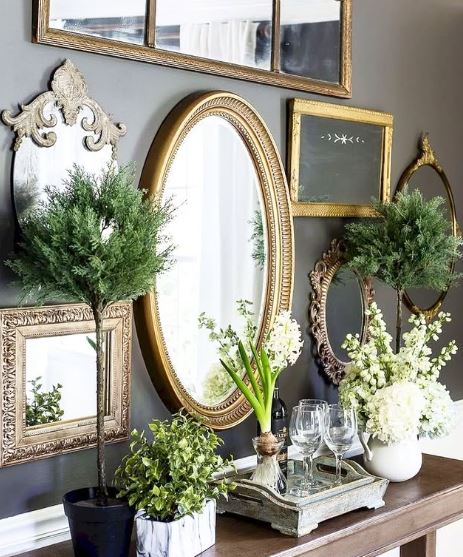
Perhaps the most enchanting aspect of buffet styling is its capacity for evolution. Unlike more permanent design elements, the buffet welcomes seasonal reinvention.
Summer might call for an arrangement of citrus fruit in a handcrafted wooden bowl, accompanied by linen napkins in sherbet hues and tapered candles that echo the lengthening evening light. As autumn approaches, the tableau shifts—gourds and pomegranates replace summer fruits, while textiles deepen to amber and mushroom tones.
“Your buffet should breathe with the seasons,” suggests Williams. “This keeps your space feeling alive and attentive to the world outside your windows.”
This fluidity extends beyond seasons to occasions. A buffet styled for a milestone birthday differs from one arranged for a leisurely Sunday brunch. The former might feature photographs and mementos amid festive elements, while the latter could showcase practical items like a coffee urn and stacked cups arranged with casual elegance.
The Personal Patina: Beyond Trends
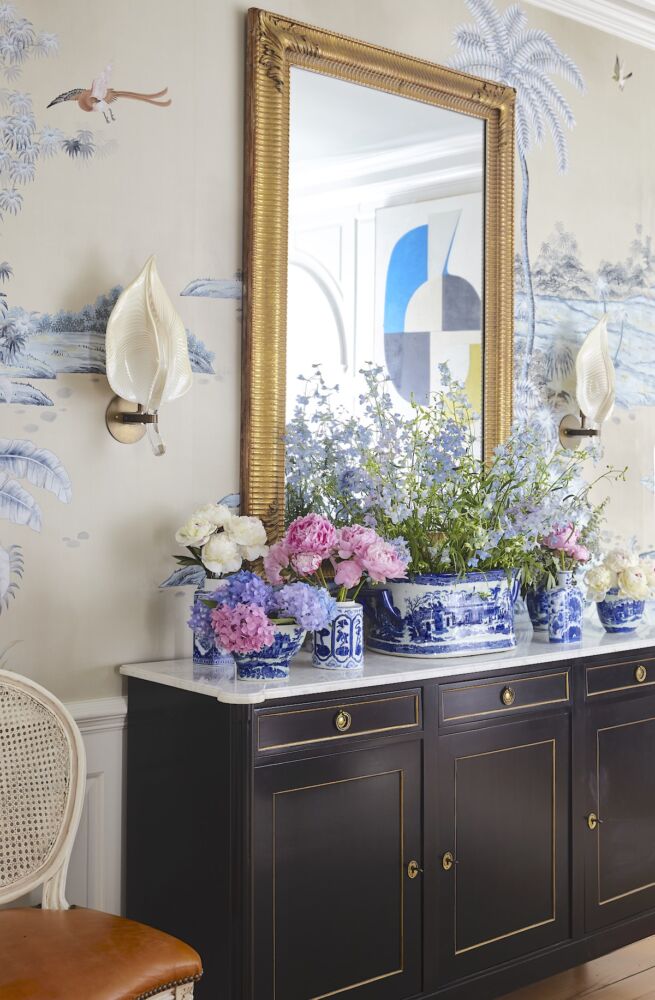
While design principles provide a framework, the most captivating buffets wear their personality with pride. That blue-and-white porcelain vase you carried home from Portugal, the brass candlesticks inherited from your grandmother, the handthrown pottery crafted by your neighbor—these pieces woven among more contemporary elements create an authenticity no designer showroom can replicate.
“I always ask clients to show me their five most treasured small items”, says Williams. “Invariably, these become the soul of the space.”
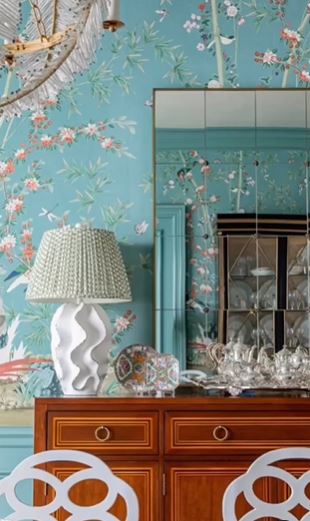
This layering of new and old, precious and practical, creates what designers call “patina”—that elusive quality of lived experience that transforms a house into a home. It’s the antithesis of the sterile, catalog-perfect rooms that dominate certain corners of social media.
Practical Magic: Function Informing Form
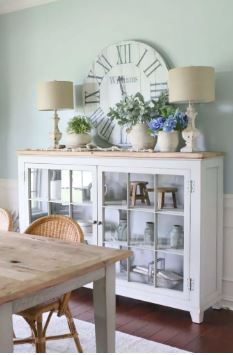
Amid these aesthetic considerations, never lose sight of function. The most exquisite buffet styling falls flat if it impedes the flow of a dinner party or makes everyday living cumbersome.
Consider the frequency with which items need to be accessed. Daily essentials should remain within easy reach, while special-occasion pieces might occupy less accessible spots. Leave clear areas where food can be placed during parties. Position lamps to cast a flattering glow over both the buffet and guests who gather near it.
Good design solves problems while creating beauty. The two aren’t mutually exclusive.
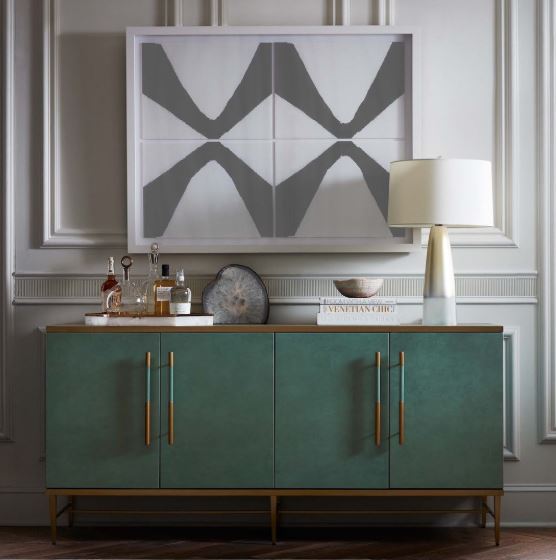
This marriage of practicality and aesthetics extends to maintenance. Choose arrangements that can be easily dusted around, and consider how your styling will weather the realities of home life—especially if you have children or pets.
The Final Layer: Lighting the Scene

No discussion of buffet styling would be complete without addressing lighting—the element that transforms the ordinary into the transcendent. A well-placed lamp not only illuminates your carefully curated collection but casts it in literal and figurative new light as evening descends.
Consider the temperature of your light source. Warmer lights enhance reds and golds, while cooler lights make blues and greens more vivid. A mix of lighting sources—a statement lamp alongside votives or tapered candles—creates depth through gentle shadows and highlights.
“Light is the most overlooked design element,” designer Karen Thorpe notes. “It’s quite literally how we see everything else.”
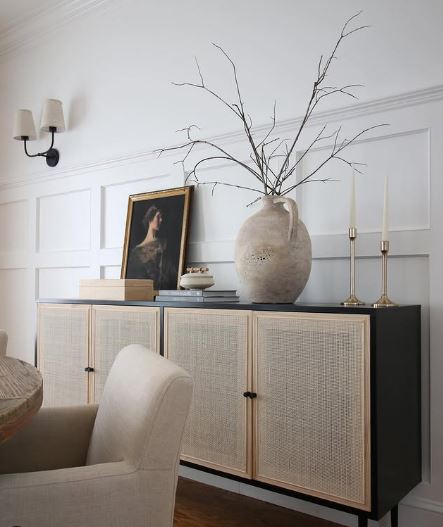
As you step back from your styled buffet, squint slightly. This old designer’s trick blurs the details and reveals the overall composition—where your eye travels, whether the arrangement feels balanced, if any area appears too heavy or too light.
The finest buffet styling isn’t static but evolving—a conversation between your space, your needs, and your aesthetic inclinations. It welcomes rearrangement and reinvention. Perhaps this is why we find it so satisfying: in a world that increasingly values the permanent and the perfect, the dining room buffet remains wonderfully responsive to the changing seasons of our lives, ready to showcase not just our style but our stories.
